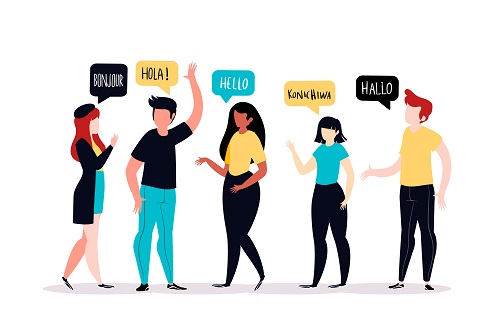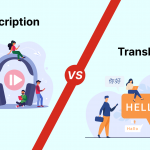What is direct translation?
Direct translation is another word used commonly for literal or word-for-word translation. This type of translation is often used in legal, technical, medical, business, and other kinds of formal documents. In translation theory, “literal translation” is often termed “metaphrase.”
Types of direct translation
Different methods related to translation techniques are used when structural and conceptual elements of the source language are to be transferred into the target language. Direct translation techniques include:
- Literal Translation
A word-for-word translation can be used only in certain language pairs depending on the sentence structures. For example, “La cena se servirá pronto” would get translated to “Dinner is served” in English. But, such “word-for-word” translations may not always work. For example, if the source language here would not have been Spanish, but French or German, this kind of translation would not have been possible because sentence structures are different in these languages.
- Borrowing
When words are used verbatim/as-is from another language without translation, it is called “borrowing.” There are several English words that have been “borrowed” into and from other languages.
More than 350 languages are represented in mainstream spoken and written English!
- If one ranks from most influential to least, English has borrowed words from: Latin, French, German, Italian, Spanish, Dutch, Scandinavian, Japanese, Arabic, Portuguese, Sanskrit, Russian, Maori, Hindi, Hebrew, Persian, Malay, Urdu, Irish, Afrikaans, Yiddish, Chinese, Turkish, Norwegian, Zulu, and Swahili. (Source: https://www.dictionary.com/e/borrowed-words/
- Loaning or calque
A loan translation or calque (which itself is a loan translation of the German term “Lehnübersetzung”) refers to a phrase borrowed from another language and translated word-for-word. The difference between borrowed translation and loaned translation types is that the former is used verbatim/as-is from the other language, while the other is translated. Such calque translation is quite rampant in specialized or internationalized fields of communication. Examples of words that have been absorbed into English from other languages through loaned translation include:
Standpunkt (German): Standpoint (English)
Casa Blanca (Spanish): White House (English)
Machine translation
Early machine translations mostly did literal translations. It simply employed a database of words and their translations. Later attempts at machine translation, utilized common phrases which resulted in improved grammatical structure and captured idioms better. However, many words were still retained in the original language. For translating synthetic languages, a morphosyntactic analyzer and synthesizer is required.
The sophisticated machine translation system used presently employs a combination of the above technologies and apply algorithms to correct the “natural” sound of the translation. In the end though, professional translation firms that employ machine translation use it as a tool to create a rough translation which is then refined by a human translator.
Translation and transcription in Language Services: Differences
| Translation | Transcription |
| A text file is converted from one language to another. | It involves listening to audio, video, live speech, etcetera, and reproducing it in text form using the exact words of the original speaker. |
| It involves a text document where words from a source language are converted to a target language. | Transcription deals with audio, video and live speech, etc., in text form. |
| Multiple languages are involved. | Mostly just one language is involved. |
| If there is a task that involves both translation and transcription, the translation will depend on the transcription as its source text i.e., translation quality could be transcription quality dependent. | Transcription directly uses the audio and video files as its source. |
| A translator needs to be proficient in at least two languages i.e., the source language and the target language. | A transcriber needs to be proficient in just one language. |








Share your thoughts